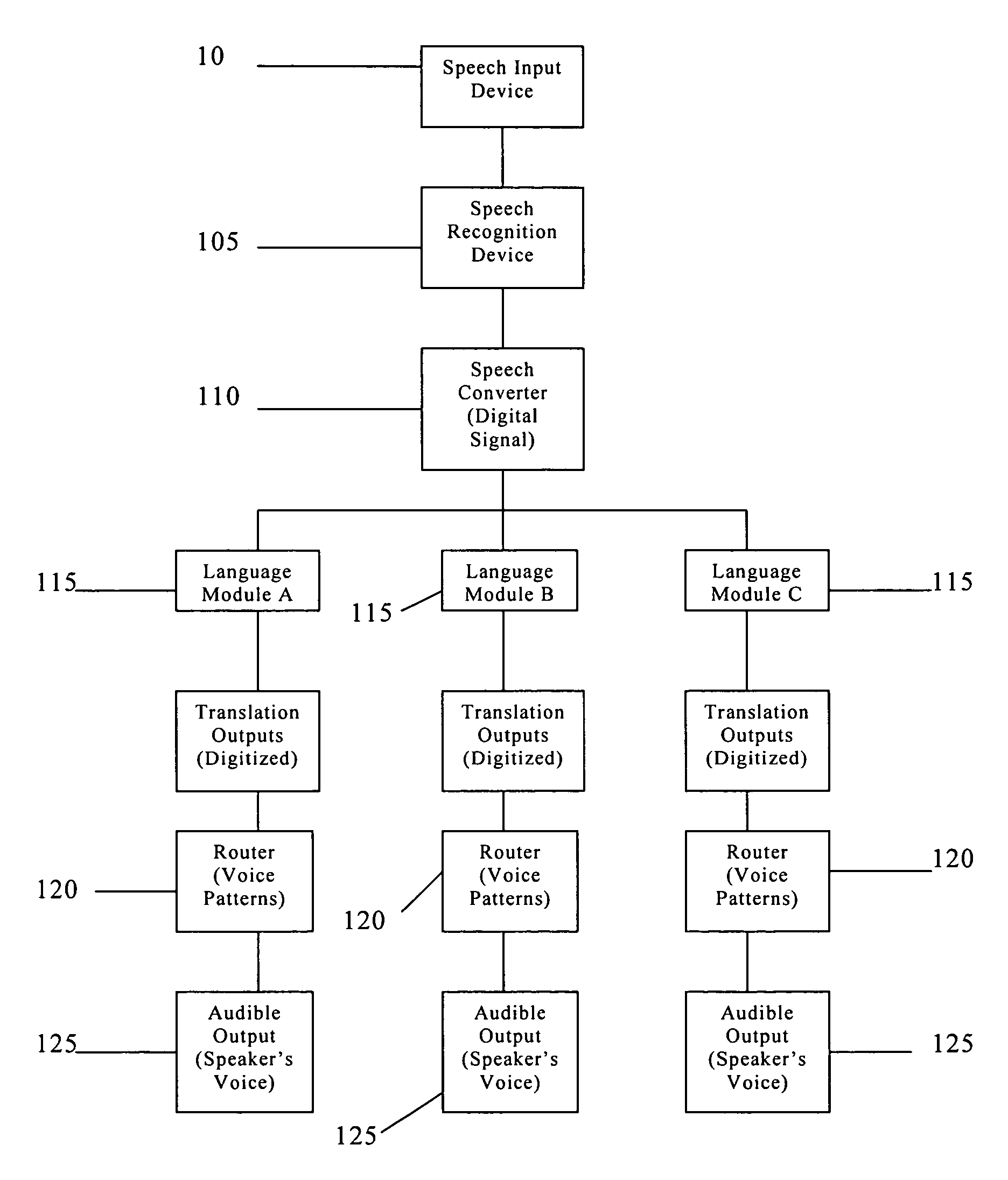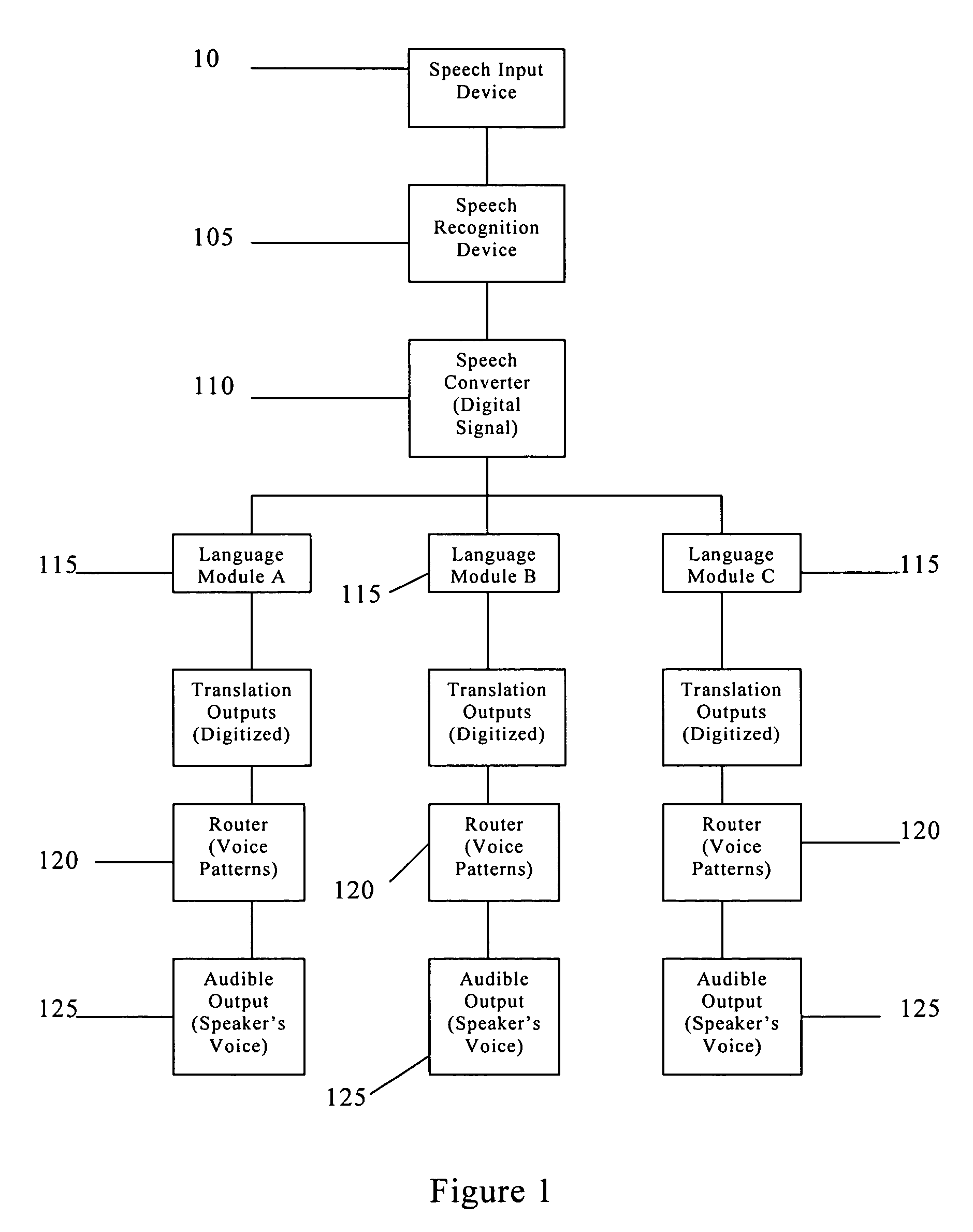Device and method for translating language
a technology of translating language and similar devices, applied in the field of translating language devices and methods, can solve problems such as lack of similar devices used in translating language, and achieve the effect of improving conversation
- Summary
- Abstract
- Description
- Claims
- Application Information
AI Technical Summary
Benefits of technology
Problems solved by technology
Method used
Image
Examples
Embodiment Construction
[0019]The preferred embodiment, FIG.1, shows a block diagram of the present invention with the following components: a speech input device 100, a speech recognition unit 105, a digitized speech converter 110, multiple language modules115, multiple routers 120, and multiple speech output units 125.
[0020]The translation device receives input from the original speaker via the speech input device 100, and the spoken word(s) are transmitted from the input device to the speech recognition unit 105, that uses speech recognition software to encode the signal input (spoken words). The encoded signal is further transmitted to the speech converter110, to produce a digitized signal. The digitized signal is now in the best format to be read by the subsequent components in a faster and much more efficient manner. A digitized signal of the spoken word(s) is sent to multiple language modules115, contained within the device to generate the same number of corresponding language outputs. The language ...
PUM
 Login to View More
Login to View More Abstract
Description
Claims
Application Information
 Login to View More
Login to View More - R&D
- Intellectual Property
- Life Sciences
- Materials
- Tech Scout
- Unparalleled Data Quality
- Higher Quality Content
- 60% Fewer Hallucinations
Browse by: Latest US Patents, China's latest patents, Technical Efficacy Thesaurus, Application Domain, Technology Topic, Popular Technical Reports.
© 2025 PatSnap. All rights reserved.Legal|Privacy policy|Modern Slavery Act Transparency Statement|Sitemap|About US| Contact US: help@patsnap.com


